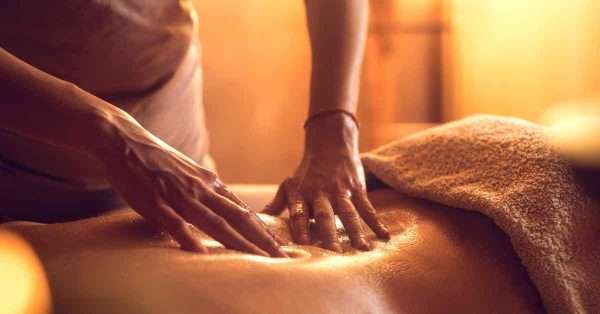In the vast realm of pain management, few techniques are as universally revered as massage therapy. For centuries, cultures worldwide have harnessed the therapeutic touch of massage to alleviate many ailments. As modern life brings physical and mental challenges, many are turning to massage therapy for pain relief. This ancient practice, backed by contemporary science, offers a holistic approach to wellness, addressing the symptoms and root causes of pain. Whether battling chronic discomfort or seeking respite from daily stressors, delve into the transformative world of massage therapy for pain relief.
Historical Roots of Massage Therapy
The art of massage is as old as human civilization itself:
- Egypt: Ancient Egyptians believed in the therapeutic properties of touch. Tomb paintings depict individuals receiving massages, suggesting a structured practice.
- China: Traditional Chinese Medicine (TCM) has always emphasized the importance of balance. Massage, or “Tui Na,” was developed to balance the body’s energy flow.
- India: Ayurveda, a holistic healing system, incorporates “Abhyanga” or oil massage to balance the body’s three doshas.
- Greece: Hippocrates, the father of medicine, wrote about the benefits of rubbing and friction for joint and circulatory problems.
Mechanisms of Pain Relief

Massage works on multiple levels to alleviate pain:
- Muscle Relaxation: Chronic tension can lead to pain. Massage stretches and relaxes muscles, promoting blood flow and easing stress.
- Lymphatic Drainage: The lymphatic system aids the removal of waste products in the body. Massage aids this process, reducing inflammation and swelling.
- Endorphin Release: The body’s natural painkillers, endorphins, are released during a massage, promoting a sense of well-being.
- Neurological Impact: Massage can recalibrate the nervous system, reducing the severity of pain signals reaching the brain.
Types of Pain Addressed by Massage Therapy
Massage is versatile, addressing various pain types:
- Musculoskeletal Pain: Chronic back pain, muscle strains, and joint pains can be alleviated with targeted techniques.
- Neuropathic Pain: Specialized strokes can soothe the discomfort of conditions like sciatica.
- Migraines and Headaches: Focused massage around the head, neck, and shoulders can reduce the tension that triggers migraines.
- Digestive Discomfort: Gentle abdominal massage can stimulate digestion, reducing discomfort.
Modern Therapies Incorporating Massage
Massage is now an integral part of many therapeutic domains:
- Physical Therapy: Before stretching and exercises, massage prepares the muscles, increasing elasticity and reducing injury risk.
- Chiropractic Care: Massage ensures muscles are relaxed before adjustments, making spinal adjustments more effective.
- Mental Health: The relaxation from massage can significantly reduce stress, anxiety, and depression, complementing traditional therapies.
Choosing the Right Massage Modality

Different pains require different approaches:
- Swedish Massage: Gentle and relaxing, it’s perfect for stress-related tension.
- Deep Tissue: Uses more pressure to reach deeper muscle layers, addressing chronic pain.
- Trigger Point Therapy: Focuses on tight muscle fibers that can form after injuries or overuse.
- Shiatsu: Based on TCM, it balances energy flow, addressing physical and emotional pain.
Finding the Right Massage Therapist
Your experience can vary based on the therapist:
- Certifications: Ensure they’ve received training from accredited institutions.
- Specializations: Some therapists focus on sports injuries, others on chronic pain conditions.
- Communication: A therapist should always ask about pain points, pressure preferences, and any areas to avoid.
Additional details about massage therapy for pain:
- Localized vs. Generalized Pain: While some massages focus on the entire body for overall relaxation and well-being, others target specific problem areas, addressing localized pain points. For instance, a person with tennis elbow might benefit from a localized massage around the elbow and forearm.
- Frequency and Duration: The number and duration of massage sessions can vary based on the individual’s pain level and the underlying cause. Chronic pain might require regular sessions, while acute pain from a recent injury might benefit from shorter, more frequent sessions.
- Adjunct to Other Treatments: Massage therapy can be an excellent adjunct to physiotherapy, medication, or surgery treatments. It can accelerate the healing process, reduce inflammation, and improve range of motion post-surgery or injury.
- Self-Massage Techniques: While professional massages are beneficial, self-massage techniques can also offer relief, especially for hard-to-reach areas or those who cannot access a therapist regularly. Tools like foam rollers, massage sticks, and even tennis balls can be used.
- Enhanced with Essential Oils: Some massages incorporate essential oils known for their pain-relieving properties, such as lavender, eucalyptus, or peppermint. These oils can enhance the therapeutic effects of the massage.
- Psychological Benefits: Beyond the physical relief, massage can offer psychological benefits. The act of touch can release oxytocin, a hormone that promotes bonding and reduces the stress hormone cortisol. This can have a positive effect on pain perception.
- Post-Massage Care: After a massage, staying hydrated is essential to help flush out toxins released during the session. Some people might also benefit from a warm bath with Epsom salts to further relax muscles and enhance the therapeutic effects.
- Contraindications: While massage benefits many, it might not be advisable in some situations, for instance, during an active infection, fever, or directly over varicose veins.
- Cultural Variations: Different cultures have unique massage techniques, each with therapeutic benefits. For example, the Thai massage involves stretching and deep pressure, while the Hawaiian Lomi Lomi focuses on long, flowing strokes.
- Insurance and Costs: Some health insurance plans cover massage therapy, especially if it’s medically necessary and prescribed by a physician. It’s essential to check coverage and find licensed therapists who meet insurance criteria.
Safety and Considerations
While massage is beneficial, there are precautions:
- Medical Conditions: Conditions like bleeding disorders, deep vein thrombosis, or severe osteoporosis require a doctor’s clearance.
- Pregnancy: Prenatal massage is beneficial, but some techniques or pressure points should be avoided.
- Post-surgery: Always wait for a doctor’s go-ahead before getting a massage after surgery.
Conclusion
Massage therapy, a practice rooted in ancient traditions, has evolved over the centuries to become a cornerstone of holistic health and wellness. Its multifaceted benefits, from alleviating chronic pain to promoting mental tranquility, underscore its timeless relevance in today’s fast-paced world. As scientific research continues to validate the therapeutic potential of massage, it’s evident that this age-old art offers more than just fleeting relaxation—it’s a conduit to profound healing. Whether you’re grappling with the rigors of arthritis, the discomfort of nerve pain, or the stresses of daily life, massage therapy beckons as a natural, non-invasive solution.
By harnessing the power of touch, it bridges the gap between mind and body, fostering a harmonious balance that resonates with holistic well-being. As you embark on your journey towards pain-free living, consider massage therapy not just as a treatment but as a celebration of your body’s innate ability to heal and rejuvenate.
More Stories
Find more amazing stories on the blog!
References:
- Pain and Massage Therapy: A Narrative Review
- A massage therapy on pain relief for knee osteoarthritis: A systematic review and meta-analysis
- Efficacy of Massage Therapy on Pain and Dysfunction in Patients with Neck Pain: A Systematic Review and Meta-Analysis
- Effectiveness of Chinese massage therapy (Tui Na) for chronic low back pain: study protocol for a randomized controlled trial
- Massage Therapy versus Simple Touch to Improve Pain and Mood in Patients with Advanced Cancer




